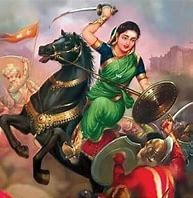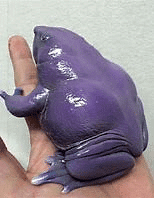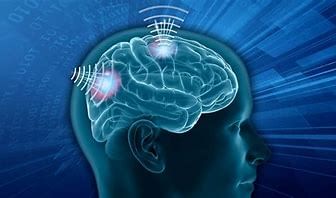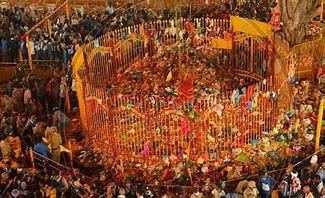UPSC Daily Current Affairs- 24th February 2024 | Current Affairs & Hindu Analysis: Daily, Weekly & Monthly PDF Download
GS-I
Medaram Jatara or Sammakka Saralamma Jathara
Subject: History & Culture
Why in News?
Telangana Governor praises Medaram Jatara as a cultural heritage.
- Background:
- Lakhs of pilgrims gather at Medaram, marking a revolt against taxes by Kakatiya rulers in the 12th century.
- About Medaram Jatara:
- Sammakka Saralamma Jathara honors goddesses in Telangana.
- The festival takes place in Medaram, Tadvai Mandal, Mulugu district.
- Location: Remote Eturnagaram Wildlife Sanctuary in Dandakaranya.
- Commemorates the struggle of Sammakka and Saralamma against unjust laws.
- The event occurs biennially.
- It is the largest tribal religious gathering globally, attracting around ten million attendees over four days.
Source: The Hindu
200 Years of Kittur Uprising: Commemorating Rani Chennamma
Subject: Modern History

Why in News?
In 1824, a fleet of 20,000 British soldiers attempted to invade the former princely state of Karnataka, positioning themselves at the foothills of the Kittur fort.
- However, Rani Chennamma, the Queen of Kittur, led a valiant resistance, marking one of the earliest woman-led anti-colonial struggles in India.
Kittur Uprising: Historical Context
- Background: Rani Chennamma’s rebellion against the British East India Company in 1824 is celebrated as a significant event in Karnataka’s political history.
- Revolt Catalyst: The Company’s refusal to recognize Shivalingappa, adopted as the successor of Kittur under the ‘doctrine of lapse’, triggered the conflict.
- Military Confrontation: Rani Chennamma led the Kittur army in a fierce battle against the British forces, resulting in the death of British official John Thackery.
Legacy of Rani Chennamma
- Political Leadership: Rani Chennamma’s role as an astute administrator and seasoned stateswoman is highlighted in historical records.
- Popular Perception: Despite her contributions, Rani Chennamma’s significance in national consciousness emerged later, as Karnataka became a state much later than other regions.
- Historical Interpretation: Folklore and local traditions fondly remember Rani Chennamma’s bravery and resilience, portraying her as a protector and guardian in Kannada lavanis or folk songs.
Post-Rebellion Period
- Imprisonment and Death: Following the British capture of Kittur Fort in 1824, Rani Chennamma and her family were imprisoned. She passed away in captivity in 1829.
- Historical Records: Historians emphasize Rani Chennamma’s commitment to serving her people, even during her imprisonment, as evidenced by her efforts to support her family and people.
Commemoration and Contemporary Relevance
- Naanoo Rani Chennamma Campaign: Social groups across India are organizing a national campaign on February 21, commemorating Rani Chennamma’s rebellion.
- Campaign Objectives: The campaign aims to mobilize women against patriarchal, anti-democratic, and casteist forces, invoking Rani Chennamma’s memory as a symbol of resistance and empowerment.
- Political Significance: The campaign underscores the need for gender equality, representation, and social justice, drawing inspiration from Rani Chennamma’s legacy of courage and leadership.
Source: Indian Express
GS-II
China's 'Xiaokang' Border Defence Villages along the LAC
Subject: International Relations

Why in News?
In recent developments along the Line of Actual Control (LAC) between India and China, Chinese nationals have begun occupying previously vacant "Xiaokang" border defence villages.
- Concerns have been raised for the Indian Army regarding the nature and strategic implications of these villages.
What are the "Xiaokang" Border Defence Villages?
- Model Villages: Xiaokang or "well-off villages" are part of China's strategic infrastructure development initiative along its borders, especially along the LAC with India.
- Dual-use Infrastructure: These villages serve both civilian settlement and military purposes, known as "dual-use infrastructure."
- Associated Concerns for India:
- Territorial Claims: China's construction of these villages along India's borders signifies efforts to assert territorial claims, raising concerns for Indian military strategists.
- Military Implications: The potential dual-use nature of the villages raises concerns about increased militarization along the LAC.
- Uncertain Intentions: Lack of transparency about the purpose and scale of civilian populations in these villages creates suspicion and hinders trust-building efforts.
- India's Initiatives along the LAC
- Vibrant Villages Program: Aims to modernize 663 border villages, with 17 selected for development along the China-India border in regions like Ladakh, Himachal Pradesh, Uttarakhand, Sikkim, and Arunachal Pradesh.
- Border Roads Organization (BRO):
- The BRO has completed 90 infrastructure projects along the India-China border to improve connectivity.
- Projects include major highways like the Trans-Arunachal Highway and Frontier Highway.
- Border Area Development Programme (BADP): A centrally sponsored scheme catering to the developmental needs of people living in remote areas near the international border.
- Railways: Indian Railways is constructing strategic rail lines in the Northeast region for swift mobilization of the Indian army.
- Line of Actual Control (LAC)
- About: Boundary separating Indian-controlled territory from Chinese-controlled territory, categorized into three sectors.
- Disagreements Surrounding the LAC:
- Primary disputes arise from alignment differences in different sectors.
- Major disagreements exist in the Western sector.
- India's response to China's LAC designation evolved over time.
- LAC vs Line of Control with Pakistan: Contrasts the LAC with the Line of Control (LoC) established after the Kashmir War.
Source: Indian Express
Donor Gametes are Allowed: New Rule on Surrogacy
Subject: Governance

Why in News?
The Central government’s recent modifications to the Surrogacy (Regulation) Rules, 2022 reflect a significant shift in the legal landscape surrounding surrogacy practices in India.
- These amendments address critical issues concerning gamete usage and access to surrogacy procedures.
Why discuss this?
- Judicial Scrutiny: The Supreme Court’s involvement stems from petitions challenging the March 2023 ban on donor gametes for surrogacy, prompting the Centre to reconsider its stance.
- Public Outcry: The judiciary’s intervention follows public outcry and legal challenges from women affected by the previous rules, emphasizing the urgency of addressing surrogacy regulations.
Key Amendments on Gametes Usage
- Gamete Flexibility: The amended rules allow couples certified with medical conditions to use donor gametes for surrogacy, provided at least one gamete originates from the intending couple.
- Single Women’s Directive: Single women, including widows and divorcees, are mandated to use self-eggs and donor sperm for surrogacy, ensuring compliance with regulatory standards.
- Certification Criteria: The District Medical Board may certify the need for donor gametes based on the medical condition of either spouse in the intending couple, facilitating access to surrogacy using donor gametes.
About Altruistic Surrogacy and ART
- Definition: Altruistic surrogacy prohibits monetary compensation to the surrogate beyond medical expenses and insurance coverage, fostering ethical practices.
- ART Regulation 2021: The Act integrates Assisted Reproductive Technology (ART) governance through the establishment of the National Assisted Reproductive Technology and Surrogacy Board, ensuring effective implementation and oversight.
Evolution of Surrogacy Rules and Amendments
- Ministry Initiative: The Ministry of Health and Family Welfare introduced the Surrogacy (Regulation) Rules, 2022, focusing on clinic standards and personnel qualifications.
- Clinical Requirements: The rules specify staffing criteria and essential equipment, enhancing operational standards across registered surrogacy clinics.
- Medical Necessity: Surrogacy is permitted in cases of uterine abnormalities, failed IVF attempts, unexplained pregnancy losses, and pregnancy impossibility due to illness, ensuring access for couples facing diverse challenges.
Key Provisions of Surrogacy (Regulation) Rules, 2022
- Clinic Composition: Registered clinics must employ qualified professionals, including gynecologists, anesthetists, embryologists, and counselors, ensuring comprehensive care.
- Gynecologist Qualifications: Gynecologists must possess relevant post-graduate qualifications and experience in ART procedures, ensuring competency in assisted reproduction techniques.
- Insurance Coverage: Mandatory health insurance for surrogate mothers safeguards their well-being during and after pregnancy, reflecting a commitment to maternal health.
- Affidavit Requirement: Intending couples must provide a legal guarantee of compliance with surrogacy regulations, ensuring accountability and adherence to legal standards.
- Embryo Implantation Limit: Strict guidelines limit embryo implantation to minimize health risks and ethical concerns, prioritizing the well-being of both surrogate mothers and unborn children.
- Abortion Protocol: Surrogate mothers’ rights are protected through adherence to established abortion procedures, respecting their autonomy and ensuring medical safety.
Source: The Hindu
GS-III
Wildlife Protection Act, 1972
Subject: Environment

Why in News?
Union Minister for Environment, Forest, and Climate Change Bhupender Yadav has recently said that there is no need for any amendment in the Wildlife Protection Act, 1972 to address human-wildlife conflict as the chief wildlife warden was empowered to trap, catch, and, if necessary, shoot wildlife according to the Section 11 of the Act.
Background:
- Recently, the Kerala Legislative Assembly passed a resolution that urged the Centre to make changes in some sections of the Wildlife Protection Act, 1972. The urge to make these amendments is for the purpose of catering to the issue of increasing conflicts between humans and animals in Kerala.
About The Wildlife Protection Act:
- The Wildlife Protection Act, 1972 is a significant legislation in India that provides a legal framework for the protection of various species of wild animals and plants, management of their habitats, and regulation and control of trade in wild animals, plants, and products derived from them.
- The Act provides for the establishment of wildlife advisory boards, regulations for hunting wild animals and birds, and the establishment of sanctuaries and national parks.
Wildlife (Protection) Amendment Act, 2022:
- The Act seeks to increase the species protected under the law and implement CITES (CITES is a multilateral treaty to protect endangered plants and animals from the threats of international trade).
- The number of schedules has been reduced to four from six:
- Schedule I contains animal species enjoying the highest level of protection.
- Schedule II for animal species subject to a lesser degree of protection.
- Schedule III for protected plant species, and
- Schedule IV for scheduled specimens under CITES.
- The Act permits the use of elephants for ‘religious or any other purposes’.
- The penalties have also been increased for general and specially protected animals’ violations.
Source: The Hindu
Purple Frog
Subject: Environment

Why in News?
Recently, the government of Tamil Nadu established the Tamil Nadu Endangered Species Conservation Fund (TNESCF) to protect the purple frog and other lesser-known endangered species.
About Purple Frog:
- It is also known as the Maveli frog or Pignose Frog.
- It is believed to have coexisted with dinosaurs and has similarities to the Sooglossidae family of frogs in Seychelles.
- It is often called a ‘living fossil’ which belongs to the Nasikabatrachidae family.
- Appearance
- It has a bloated body with short stout limbs and is dark purple to greyish in colour.
- It has a small head in comparison to the body length, and an unusually pointed snout.
- Its short and muscular forelimbs with hard palms help it to burrow underground.
- Unlike other frogs, it has very short hind legs, which do not allow it to leap from one spot to another.
- Habitat: This burrow-dwelling frog prefers loose, damp and well-aerated soil close to ponds, ditches or streams.
- Distribution: It is the soil-dwelling frog endemic to selected habitats in the Western Ghats in Kerala and Tamil Nadu.
- The Anamalai hill is one of its prime habitats in Tamil Nadu.
- Tamil Nadu is home to two types of Purple frogs: Nasikabatrachus sahyadrensis and Nasikabatrachus bhupathi.
- It remains underground most of the year except for 2-3 weeks during the monsoon when it comes out to mate.
- Conservation status
- IUCN: Endangered
- Wildlife Protection (Amendment) Act, 2022: Schedule I
- Threats: Habitat loss, road networks through their habitats, and climate change are some of the major threats to their survival.
Source: The Hindu
Sub-national Climate Fund
Subject: Environment

Why in News?
A delegation from the World Bank has arrived in Goa for talks with the state govt to set up the first sub-national climate resilient green fund.
About Sub-national Climate Fund:
- It is a global blended finance initiative to develop mid-size climate-resilient infrastructure & nature-based solutions.
- Mission: To invest in subnational climate-smart infrastructure and nature-based solutions delivering measurable and certified climate and sustainable development impact at the local level.
- The model is designed to attract public and private investment and to deliver certified climate and Sustainable Development impacts and Nature-based Solutions.
- Structure:
- Fund Manager: It is managed by Pegasus Capital.
- Technical assistance: The International Union for Conservation of Nature (IUCN) is responsible for the Technical Assistance component of SCF.
- Anchor Investor of Concessional Capital: The Green Climate Fund (GCF)
- Governance
- The governance of the Subnational Climate Fund (SCF) includes a High-level Advisory Committee.
- The role of the committee is to advise the SCF Consortium on the best opportunities to invest in regard to the SCF mission, and more widely on the theory of change encompassed by SCF.
- This Committee is composed of well-known experts in their field of expertise in climate science, finance/economies, sector/technical, biodiversity/nature-based solutions, and environmental/social management systems (ESMS).
Source: Times of India
GS-IV
Brain-Computer Interface
Subject: Ethics

Why in News?
According to Elon Musk, the first human received an implant from his computer-brain interface company Neuralink.
Background:
- Since its founding in 2016, Elon Musk’s neurotechnology company Neuralink has had the ambitious mission to build a next-generation brain implant with at least 100-times more brain connections than devices currently approved by the U.S. Food and Drug Administration (FDA).
What is a Brain-Computer Interface?
- A Brain-Computer Interface (BCI) is a technology that enables direct communication between the brain and external devices, such as computers or prosthetics, without using traditional neuromuscular pathways like nerves and muscles.
- BCI typically involves the use of sensors to detect brain activity, which is then translated into commands or actions, allowing individuals to control devices or interact with the external world using their thoughts.
Potential applications of Brain-Computer Interface:
- Monitoring and treating neurological conditions like epilepsy, Parkinson’s disease, and neurodegenerative disorders by directly interfacing with the brain.
- Assisting in motor function recovery and rehabilitation after a stroke.
- Enabling individuals with paralysis or motor impairments to control devices, such as prosthetics, wheelchairs, or robotic limbs, using their thoughts. Restoring communication for individuals with conditions like locked-in syndrome (paralyzed except for the muscles that control eye movement).
- Providing real-time data for monitoring and managing mental health conditions, such as depression or anxiety.
- Enhancing virtual and augmented reality experiences by allowing users to interact with digital environments using their thoughts.
Ethical considerations related to Brain-Computer Interface (BCI):
- BCIs can potentially decode thoughts and emotions. Unauthorized access to this information raises concerns about cognitive privacy. As with any technology that involves the collection and storage of sensitive data, there are risks of hacking and unauthorized access to brain data, which could lead to identity theft or other malicious uses.
- There is a risk that BCIs could be manipulated to unauthorized control or manipulation of a person’s thoughts or actions.
- Critics argue that BCIs could exacerbate existing social inequalities if only specific socioeconomic groups can afford the technology due to its high cost and may lead to a situation of cognitive divide.
- Distinguishing between therapeutic uses of BCIs and threats to normal cognitive function is subjective.
Source: The Hindu
|
44 videos|5271 docs|1113 tests
|
FAQs on UPSC Daily Current Affairs- 24th February 2024 - Current Affairs & Hindu Analysis: Daily, Weekly & Monthly
| 1. What is the significance of Medaram Jatara or Sammakka Saralamma Jathara? |  |
| 2. Who was Rani Chennamma and why is the Kittur Uprising commemorated for 200 years? |  |
| 3. What are China's 'Xiaokang' Border Defence Villages along the LAC? |  |
| 4. What is the new rule on surrogacy regarding donor gametes? |  |
| 5. How does the Wildlife Protection Act, 1972 contribute to the conservation of wildlife in India? |  |

















